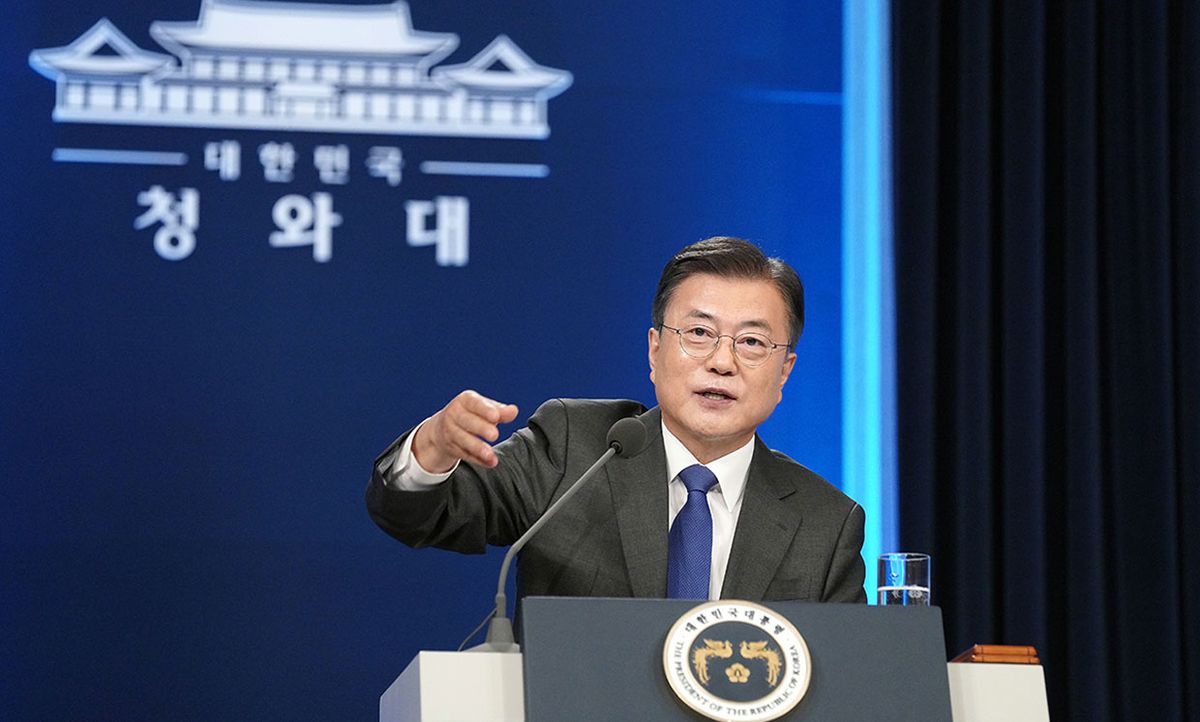They say data is the new oil. If so, maybe advanced chip foundries are the new nukes. Ten years from now, “superpower status is going to be defined by the ability to make semiconductors,” says Bharat Kapoor, lead partner, Americas, in the high-tech practice of global strategy and management consulting firm, Kearney.
South Korea’s announcement earlier this month of a plan to spend US $450-billion over the next ten years on new semiconductor manufacturing capabilities is a case in point. The initiative is just one of a string of chip-making plans and promises from the world’s biggest economies and their resident semiconductor majors.
“Countries around the world have embarked on reorganizing supply chains in ways that prioritize their own needs, engaging in fierce competition. The direction we should take is clear. Preemptive investments should further strengthen our domestic industry ecosystem, so it cannot be shaken by external shocks. Being at the forefront of global supply chains will allow us to seize this opportunity as our own,” South Korean President Moon Jae-in said at an event kicking-off the program.
Semiconductors are already Korea’s largest export at 14.6 percent. However, most of that is memory products—DRAM and NAND Flash memory. The new plan instead aims to boost the nation’s advanced logic chip foundry capacity. Samsung already operates a foundry service with technological capabilities on par with world leader TSMC, but it doesn’t have TSMC’s volume. Samsung had 17 percent of 2020’s $85-billion global foundry revenue compared to TSMC’s 54 percent. SK Hynix, too, has some foundries but those facilities are far less advanced.
The money to get there will come from some 152 companies in South Korea, with the government contributing 40-50 percent tax credits for R&D investments and 10-20 percent for new facilities. For Samsung’s part the company upped the amount it planned to spend on its advanced logic business by 2030 from 133 trillion won to 171 trillion won ($152 billion). According to Bloomberg, SK Hynix plans $97-billion to expand existing facilities and $106-billion for new plants.
The South Korean plan follows announcements of still embryonic initiatives by the European Union and the United States among others. Last December EU nations agreed to boost their chip making sector and aim to move toward 2-nanometer technology. (3-nanometer tech is set for production in 2022.) And the United States took its first steps in January, authorizing financial incentives for a broad-base of chip manufacturing, including advanced packaging, test, and assembly. Plans for funding that initiative at a cost of about $50-billion are now being discussed, possibly as part of a larger infrastructure bill in the works.
Stacked beside the South Korea effort or even TSMC’s recent planned investment of $100-billion over three years “the Biden Administration’s $50 billion seems paltry in comparison” to South Korea’s commitment, says Jim Feldhan, president of Semico Research. “You’re not going to get to number one with that amount.”
However, he points out that chip companies are already ramping up their plans for U.S.-based manufacturing. Intel is rebooting its foundry business with a $20-billion investment in two new fabs in Arizona, and it added $3.5-billion to equip its New Mexico operations to make advanced 3D chip packaging. TSMC plans a $12-billion fab in Arizona, but purchased enough land for many more. And Samsung is planning a $17-billion plant, possibly in Texas.
Advanced chip making, is stupendously expensive. Building and equipping a fab capable of the cutting-edge manufacturing cost $10 billion or more. Inventing a next generation chip making process to run in those fabs is about a $400-million investment, according to Feldhan. And the expense is pretty steep for customers are well, designing a chip for manufacture at 5 nanometers can cost as much as $200 million, he says, limiting the field of potential customers. But even with a big expansion of manufacturing, Feldhan does not see oversupply on the horizon. Cars will need ever more advanced silicon; new AI-accelerators are essential to the big platforms like Microsoft, Amazon, and Google; and the expansion of 5G will likely lead to growth of new product categories, he points out.
Much of the recent chip-making national efforts were motivated by China. U.S. leaders are particularly determined to keep China from gaining technological parity with the U.S. and concerned that so much of the advanced semiconductor supply is within a few hundred kilometers of it. But it’s also part of a broader economic and technological nationalism playing out across the world, notes geopolitical futurist Abishur Prakash with the Center for Innovating the Future, in Toronto.
Some see these “shifts in geopolitics as short term, as if they’re byproducts of the pandemic and that things on a certain timeline will calm down if not return to normal,” he says. “That’s wrong. The direction that nations are moving now is the new permanent north star.”
What’s all this mean for the semiconductor shortage that’s costing the auto industry so much? Nothing really.
It takes one or two years to build a fab and another six months to ramp up to production, notes Feldhan. So the fabs and production lines that were already in the works and coming onstream should tie things up by early to mid 2022, according to analysts.
But the experience will hold some long-lasting lessons for chip customers, especially the auto industry, according to Kapoor. During the last 100 years that industry “has been at the forefront of how a buyer-supplier network has been set up,” he says. Signals about supply and demand move up and down the chain, but if there are too many steps it can resemble a game of telephone and the messages get garbled. The chip industry and auto executives need a more direct connection going forward so signals are clearer, advises Kapoor.
Samuel K. Moore is the senior editor at IEEE Spectrum in charge of semiconductors coverage. An IEEE member, he has a bachelor's degree in biomedical engineering from Brown University and a master's degree in journalism from New York University.



